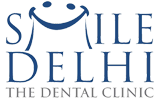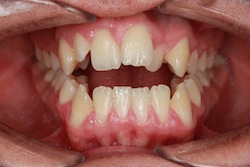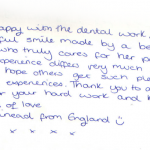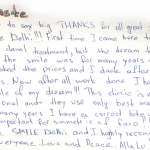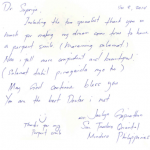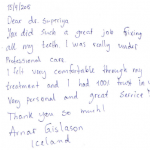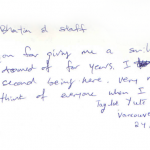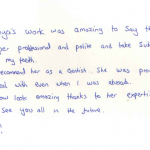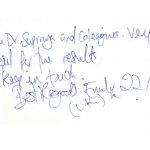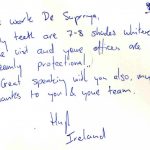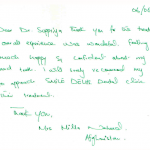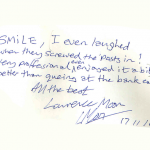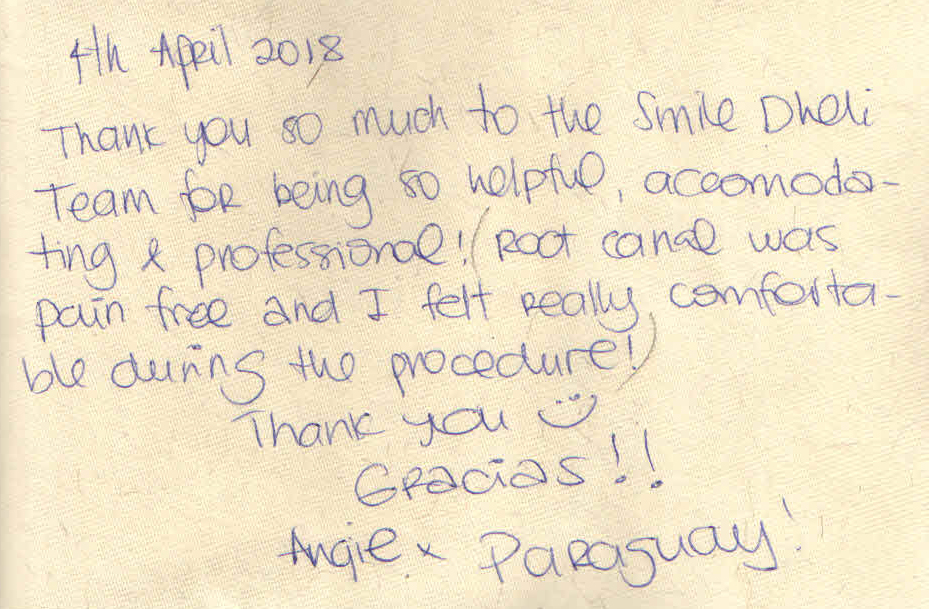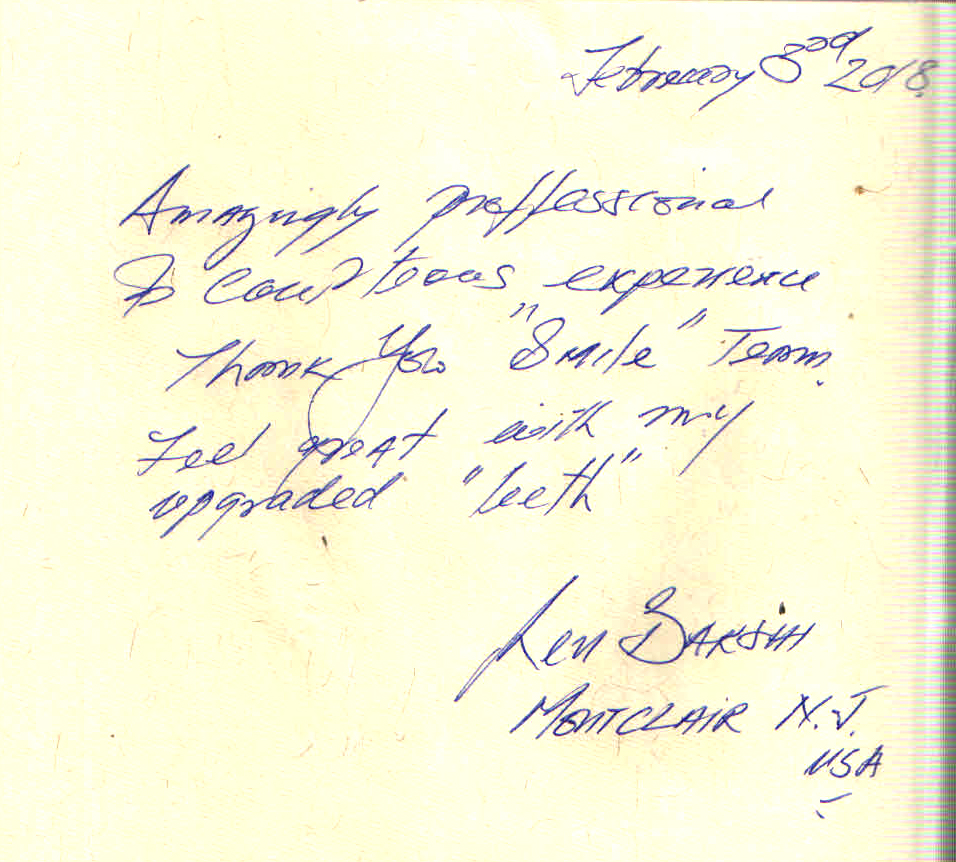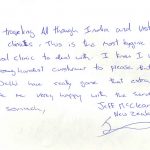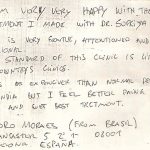Do you have an open bite?
An open bite is one dental disorder that is more often than not caused by the patient himself.
It is a term used to describe when the upper and lower teeth are unable to make physical contact with each other when the jaws are closed.
The basic issue is that the front teeth, both upper and lower are forced outwards to an extent that the teeth of the upper and the lower jaw do not touch each other, even when the mouth is closed.
In an ideal bite, the upper teeth should slightly overlap lower teeth in the vertical dimension.
All children experience anterior open bites during the time period when the permanent teeth erupt after the baby teeth fall out.
Whether treatment is necessary is determined by the cause of the open bite.
Sometimes the cause is genetic and involves skeletal issues, such as excessive development of the molars or jawbones that grow away from each other.
Another type of an open bite is called a posterior open bite, causing an open bite in the back teeth.
Essentially, the problem is caused by any action by the patient which puts a strain on the alignment of the teeth, especially when the patient is young. Prominent culprits in this regard are thumb sucking, tongue thrusting and chewing on a pencil or some similar object.
Prolonged and incorrect use of feeding bottles and pacifiers could also contribute to the development of the condition.
Any of the habits discussed above could cause the front teeth to flare out. Since the jaw is still developing, the teeth become misaligned.
This has several effects. First, and most prominently, the patient’s smile is adversely affected. Often this results in loss of self esteem. The patient could also develop a lisp which is not so attractive in later years.
Yet another reason for this condition could be a temporomandibular joint disorder (TMJ) where the patient suffers from chronic pain in the jaw and uses his tongue to push the teeth apart so that his jaw can be in a more comfortable position.
For years dentists have told patients that anterior open bites (bites where there is a gap between the upper and lower front teeth) are created when the tongue is pushed between the front teeth during swallowing or due to thumb sucking habit.
The tongue is one of the strongest and most active muscles in the body. Tongue thrust is involved in nearly all open bites. An open bite can be created by tongue thrust, tongue posture or mandibular posture.
Tongue is an unusual muscle in that its contraction allows it to assume many shapes; the tongue becomes the cushion for the dentition during the swallow. The tongue positions (contraction, thrust or rest position) itself between the teeth during the swallow and the open bite is born.
Once space has been created between the upper and lower teeth by the tongue it continues to enter the space created, consequently enlarging the space.
The open bite immediately worsens. The open bite thus created may require several months to correct. If left untreated, it becomes a habit and the more engrained a habit the more effort needed to change it.
Research showed that closing the open bite using braces and associated appliances eliminates poor tongue posture in 80% of patients.
Dentists in India are making it a point to educate parents and children about the ill effects of such oral habits.
An open bite can be caused by poor oral habits such as:
- Sucking of the lower lip
- Thumb sucking – babies have a natural instinct to suck, and they often suck thumbs and fingers in their infancy to comfort themselves. The ideal time to stop thumb sucking is around age 3 or 4. Continuing the habit beyond this age can result in the need for orthodontic correction.
- Tongue thrusting – a poor swallowing pattern where the tongue protrudes through the front teeth during swallowing, speech, and while the tongue is at rest.
- Tongue forward posture – the tongue is too far forward when it’s at rest, which pushes against the teeth and creates open bite over time. Mouth breathing also can cause your child to have a tongue forward posture.
Once the open bite occurs it is best to treat it immediately as the open bite thus created will only worsen with time.
Open bites that don’t include skeletal components or prolonged poor oral habits sometimes self-correct as your child grows.
Age 7 is definitely the best time to evaluate if there will be enough space for all of the permanent teeth and to ensure that the jawbones are growing properly. Your child should be evaluated at this age because they have a mixture of baby and adult teeth.
At this time, we would be able to determine if interceptive treatment is needed to correct any problems that exist, or if your child just needs to continue being monitored periodically to determine if and when orthodontic treatment will be necessary.
Dentist in Delhi can suggest a schedule for follow-up care for your child.
Children with an open bite that doesn’t self-correct will most likely need orthodontic treatment. Otherwise, the back teeth can easily wear faster than normal due to an increase in tooth-to-tooth contact points with the back teeth and chewing could become painful for your child.
Speech impairment is another common result of untreated open bite. When your child has an open bite, it also can be difficult or even impossible, depending on the severity – to prevent food or liquids from escaping when swallowing if the tongue isn’t placed in the gap between the upper and lower teeth. This action can exacerbate the problem.
Regardless of the cause, orthodontic treatment can correct this type of malocclusion and give your child a smile to be proud to show off.
Correcting Open Bites
While correcting this condition is relatively straightforward, the correction does not tend to be permanent. This is because straightening the teeth using braces enlarges the socket in the jaw.
As soon as the restraint offered by the brace is removed, the tongue gets back to work and pushes the teeth to their original position. It is quite clear, then, that the problem is best corrected early.
Some treatment techniques for closing open bites include habit appliances, vertical elastics, temporary anchorage devices, extractions, and surgery.
The dentists in dental clinics in Delhi and dental clinics in India have trained themselves to keep abreast with the latest techniques of dentistry and therefore, treating an open bite by closing the teeth into the correct position and alignment.
The best cure is to prevent the open bite from occurring in the first place. You can gently eliminate thumb sucking, tongue thrusting and reduce the dependence on the pacifier.
If the treatment is delayed, the patient may end up with poor speech and an unattractive smile and which would make surgery the only resort to fix the open bite.
Posted by- Dr Suprriya and Dr Shriya
